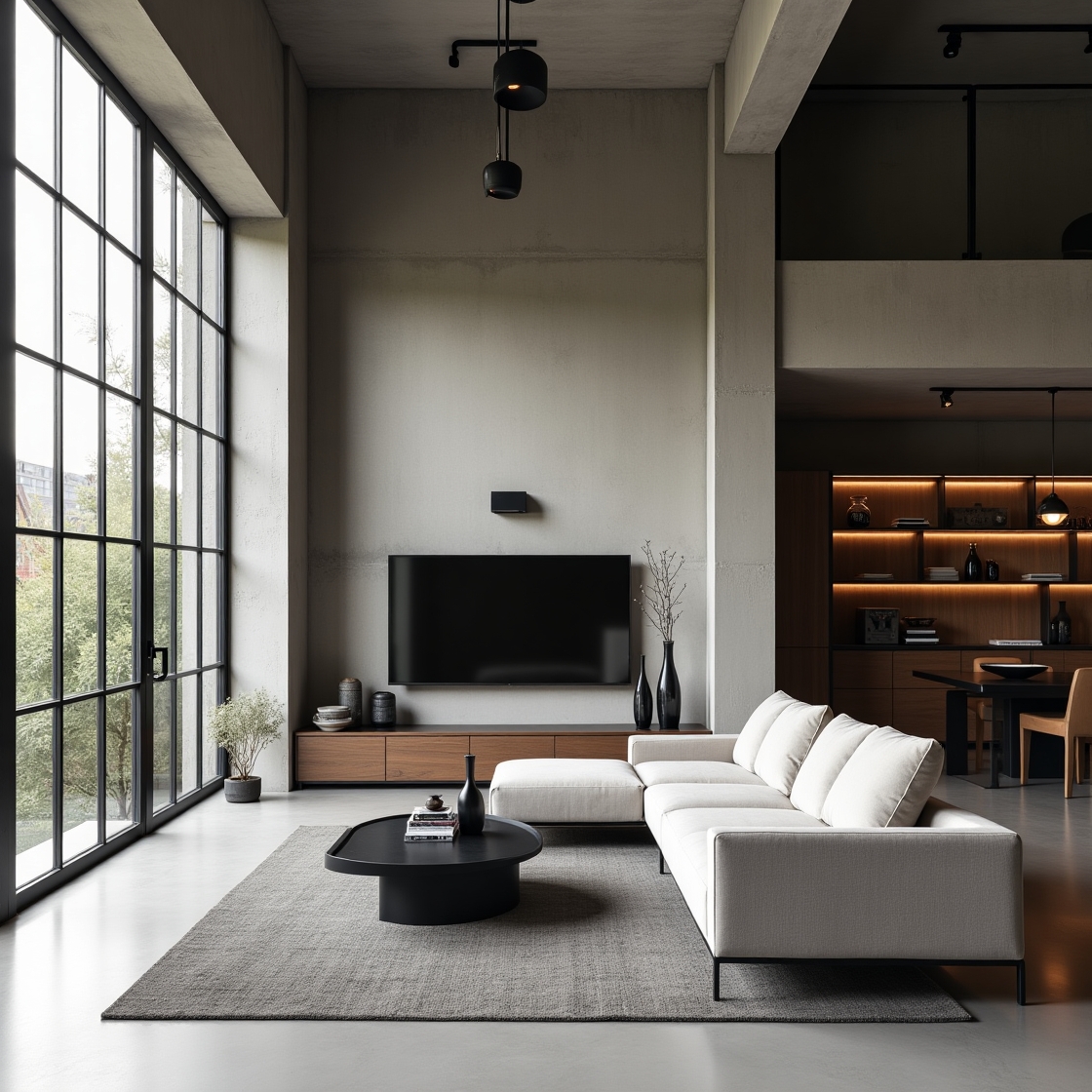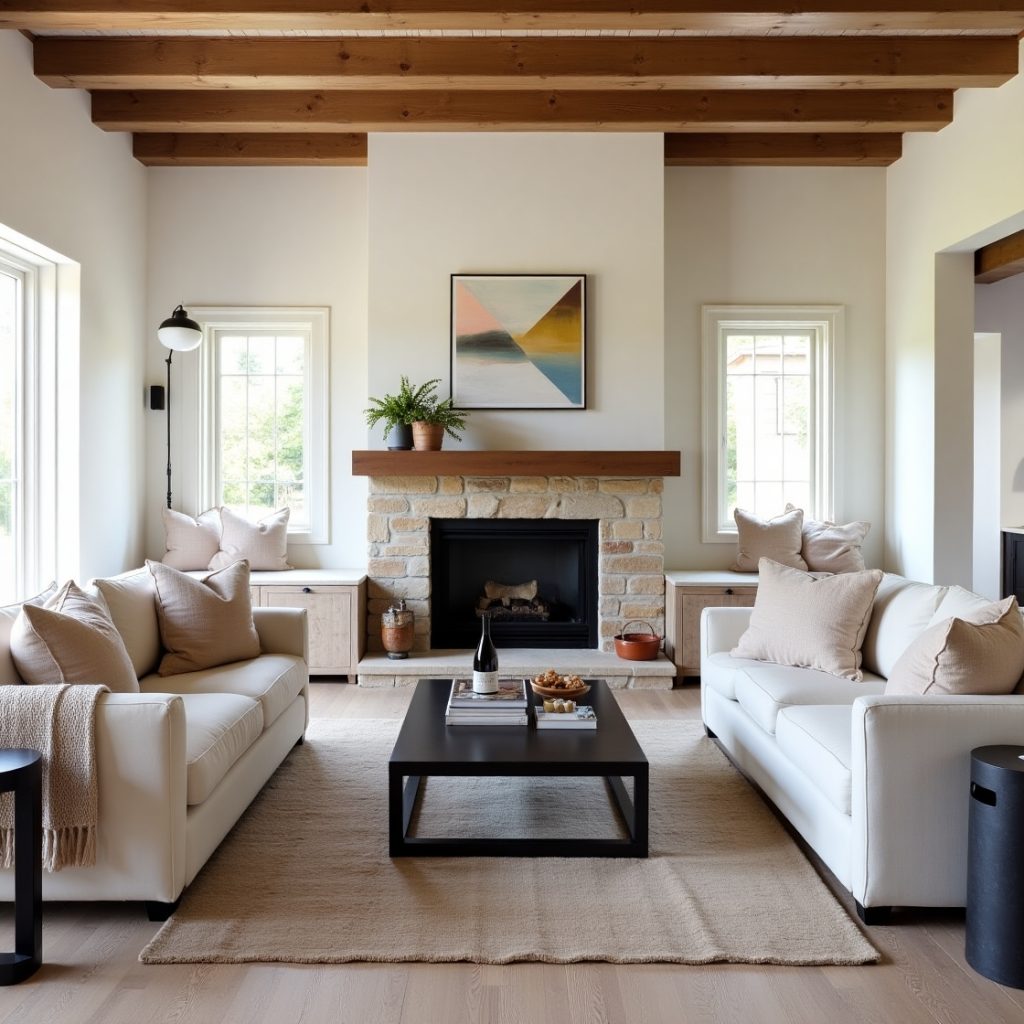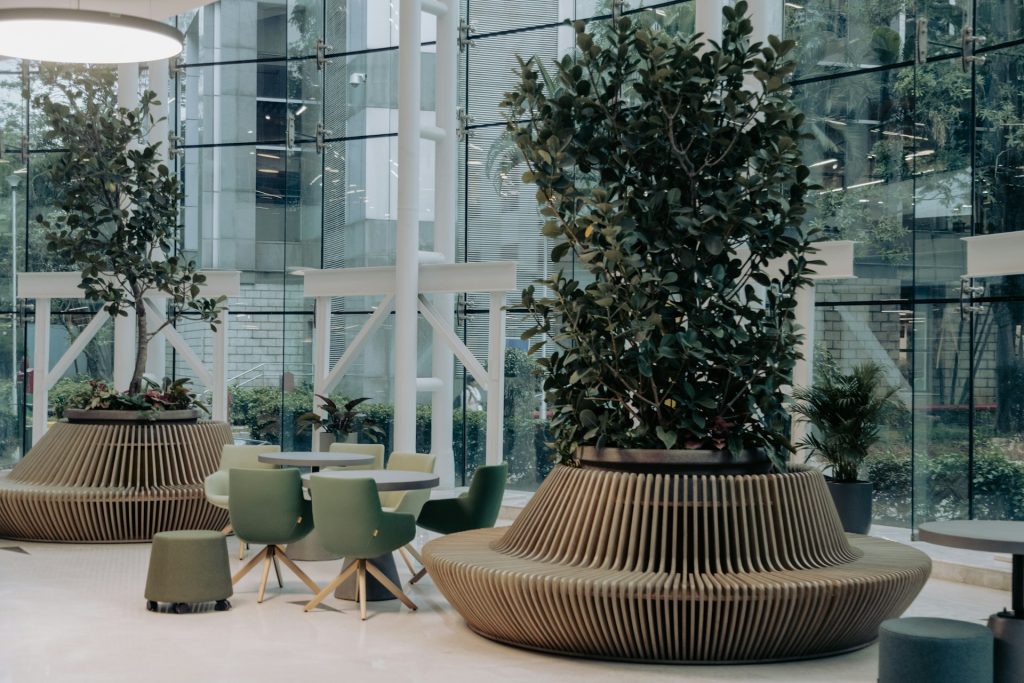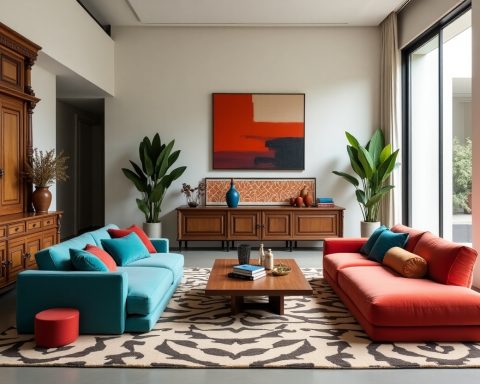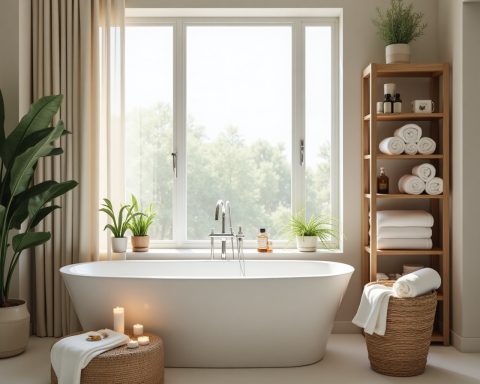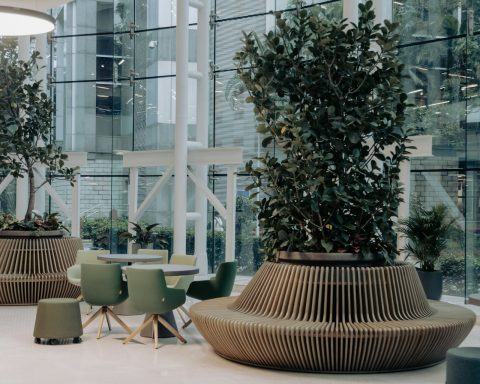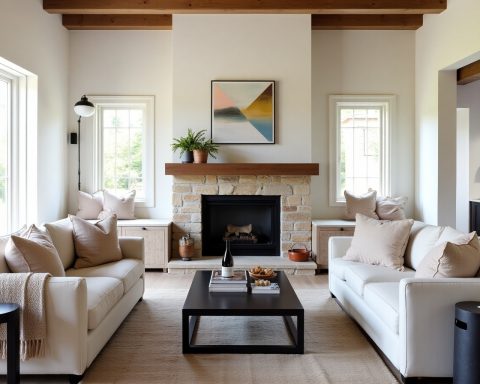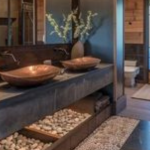The raw, utilitarian appeal of industrial design and the clean, uncluttered elegance of minimalism might seem like opposing forces. However, when thoughtfully combined, they can create a surprisingly harmonious and sophisticated living space. The key lies in understanding the core tenets of each style and then artfully layering elements to achieve a balanced and cohesive aesthetic that feels both grounded and airy. This guide will walk you through the principles and techniques for seamlessly blending industrial and minimalist styles.
1. Understanding the Core Principles:
Before you begin, it’s crucial to grasp the essence of each style:
- Industrial: Celebrates raw materials, exposed structural elements (pipes, beams), a neutral and often muted color palette (grays, blacks, whites, browns), utilitarian functionality, and a sense of history or repurposed elements.
- Minimalist: Emphasizes simplicity, clean lines, a monochromatic or very limited color palette, functionality without ornamentation, ample negative space, and a focus on essential forms.
The successful blend comes from finding the overlaps and using the strengths of one to soften or enhance the other.
2. Start with a Minimalist Foundation:
A minimalist approach often provides a strong and versatile base for incorporating industrial elements.
- Clean Lines and Simple Forms: Begin with furniture that features clean lines and basic geometric shapes, characteristic of minimalism. Think simple sofas, rectangular tables, and unadorned shelving units.
- Neutral Color Palette: Establish a foundation of white, gray, or very light beige walls and potentially lighter flooring. This provides a backdrop that allows industrial accents to stand out without overwhelming the space.
- Prioritize Functionality: Every piece should serve a clear purpose, aligning with both minimalist and industrial practicality. Avoid purely decorative items initially.
3. Introduce Industrial Accents Strategically:
Instead of a full-blown industrial conversion, introduce key industrial elements as accents to add character and texture to the minimalist base.
- Exposed Structural Elements (If Possible): If your space has existing exposed brick, concrete walls, or visible pipes, embrace and highlight them. Clean them up and let their natural texture and form become part of the design.
- Industrial Lighting: Incorporate statement industrial light fixtures, such as pendant lights with metal shades, factory-style floor lamps, or bare bulb fixtures. Their utilitarian design and often metallic finishes provide a strong industrial touch.
- Metal and Concrete Details: Introduce furniture or décor with metal (steel, iron) or concrete elements. This could be a metal-legged coffee table, concrete planters, or metal shelving brackets.
- Reclaimed Wood: Use reclaimed wood for tabletops, shelves, or even a feature wall. Its natural texture and often rustic appearance offer a warmer, more organic industrial touch that contrasts nicely with sleek minimalism.
4. Balance Rawness with Refinement:
The key to a smooth blend is to temper the inherent rawness of industrial design with minimalist refinement.
- Soften with Textiles: Introduce soft textiles like wool throws, linen cushions, and plush rugs in neutral colors to add warmth and comfort to the often hard surfaces of industrial elements.
- Streamline Industrial Forms: Choose industrial-inspired pieces with cleaner lines and less overtly “grungy” detailing. Opt for smoother metal finishes over heavily rusted ones, for example.
- Introduce Organic Shapes: Juxtapose the strong geometric forms of both styles with a few carefully chosen organic shapes, such as rounded vases, sculptural plants, or a curved armchair. This adds visual interest and softens the overall look.
5. Intentional Use of Texture:
Texture plays a crucial role in adding depth and interest to a blended space, preventing it from feeling flat or sterile.
- Contrast Smooth and Rough: Combine smooth minimalist surfaces (glass, polished metal) with rougher industrial textures (exposed brick, raw wood, concrete).
- Layer Textiles: Use layers of different textures in your throws, cushions, and rugs to add tactile richness within the minimalist color palette.
- Natural Materials: Incorporate natural materials like leather, wool, and linen, which bridge the gap between the utilitarian feel of industrial and the understated elegance of minimalism.
6. Maintain a Minimalist Approach to Décor:
Avoid clutter and keep decorative items to a minimum, adhering to the minimalist principle of “less is more.”
- Focus on Functional Objects: Choose décor that also serves a purpose, such as a stylish clock, a well-designed lamp, or a curated selection of books.
- Meaningful Pieces: Select a few impactful and meaningful decorative items rather than numerous small trinkets.
- Negative Space is Key: Allow for ample empty space on walls and surfaces to let the individual elements breathe and prevent the room from feeling crowded.
7. Strategic Color Application:
While both styles often favor neutrals, consider how you introduce color to enhance the blend.
- Monochromatic with Industrial Accents: Maintain a primarily monochromatic minimalist base and allow the natural colors of industrial materials (the brown of wood, the gray of metal) to provide subtle contrast.
- Limited Pops of Color: If you introduce color, do so intentionally and sparingly through artwork, a single statement piece of furniture, or a few carefully chosen accessories. Opt for muted or earthy tones that complement the industrial palette.
8. Lighting as a Unifying Element:
Lighting can be a powerful tool for bridging the two styles.
- Industrial Fixtures with Soft Bulbs: Choose industrial-style fixtures but use warm, soft-toned bulbs to create a more inviting and less harsh ambiance, aligning with minimalist comfort.
- Minimalist Lamps with Industrial Materials: Look for minimalist lamp designs that incorporate industrial materials like metal or concrete.
- Layered Lighting: As mentioned before, a combination of ambient, task, and accent lighting adds depth and allows you to adjust the mood of the space, softening the starkness of either style.
9. The “Edited” Industrial Look:
Not every industrial element needs to be present. Choose the most impactful pieces that complement your minimalist foundation. A single exposed pipe detail or a striking metal-framed window can be enough to inject the desired industrial character.
10. Personalization with Restraint:
While adhering to the principles of both styles, remember to personalize the space so it reflects your taste. This could be through carefully chosen artwork, books, or objects that hold personal significance, ensuring the blend feels authentic to you.
11. Flooring as a Foundation:
The flooring choice sets a significant tone for the blended aesthetic.
- Concrete: Polished or sealed concrete floors offer a quintessential industrial feel while maintaining the clean, unadorned nature of minimalism.
- Hardwood: Light or natural-toned hardwood floors provide warmth and sophistication, softening the rawness of industrial elements while remaining relatively minimalist. Avoid overly ornate or dark wood finishes.
- Large Format Tiles: Neutral-toned, large format tiles can offer a sleek and minimalist backdrop that complements industrial accents.
12. Window Treatments: Balancing Light and Privacy:
Window treatments should be functional and visually align with the blended style.
- Minimalist Blinds or Shades: Roller blinds or simple Roman shades in neutral colors maintain clean lines and allow for light control without adding visual clutter.
- Sheer Curtains: Light, airy sheer curtains can soften the industrial edge while still adhering to a minimalist aesthetic. Avoid heavy drapes or ornate patterns.
- Exposed Window Frames: If your windows have interesting metal frames, consider leaving them exposed as an industrial detail.
13. Kitchen Design: A Functional Fusion:
The kitchen offers ample opportunity to showcase the blend of industrial and minimalist styles.
- Sleek Cabinetry with Industrial Hardware: Opt for handleless or very simple, flat-front cabinetry (minimalist) paired with exposed metal handles or pulls (industrial).
- Open Shelving with Industrial Brackets: Incorporate open shelving supported by metal brackets to display minimalist dishware and functional items while adding an industrial touch.
- Concrete or Stainless Steel Countertops: These materials offer a durable and utilitarian feel that aligns with both styles.
- Industrial-Style Faucets and Sinks: Choose fixtures with clean lines and metallic finishes.
14. Bathroom Design: Utilitarian Elegance:
The bathroom can be transformed into a serene yet subtly industrial space.
- Exposed Plumbing Details: Showcase clean, modern exposed pipes as an industrial accent.
- Concrete or Stone Vanity Tops: These materials offer a raw yet sophisticated feel.
- Minimalist Fixtures with Metal Accents: Select simple, streamlined faucets and showerheads with metallic finishes.
- Subway Tiles with Dark Grout: Classic subway tiles offer a clean, minimalist backdrop, while dark grout adds an industrial edge.
15. The Workspace Nook:
If incorporating a home office area, maintain the blended aesthetic for a cohesive look.
- Simple Desk with Metal Legs: A minimalist tabletop paired with industrial metal legs.
- Industrial Task Lamp: A functional and stylish metal task lamp.
- Minimalist Storage Solutions: Clean, closed storage units or simple open shelving.
16. Outdoor Spaces (If Applicable): Extending the Blend:
If you have a balcony, patio, or garden, carry the blended style outdoors.
- Metal and Wood Furniture: Combine minimalist furniture with industrial materials like metal frames and reclaimed wood.
- Concrete Planters: Use simple concrete planters for greenery.
- Industrial Outdoor Lighting: Choose minimalist outdoor lighting fixtures with metallic finishes.
17. The Art of Editing and Restraint:
Throughout the design process, continually edit your choices and practice restraint. The beauty of this blend lies in the careful selection and placement of each element. Avoid overcrowding the space with too many competing features.
18. Focusing on Quality over Quantity:
Both industrial and minimalist styles value quality and durability. Invest in well-made pieces that will stand the test of time, rather than opting for cheap, trendy items.
19. Embracing Imperfection:
Industrial design often celebrates the natural imperfections of materials. Allow for some variations in wood grain or the texture of concrete to add character and authenticity to the blended space.
20. Lighting as Architectural Detail:
Consider how lighting fixtures themselves can act as architectural details, contributing to the industrial aesthetic through their form and placement. Think track lighting, adjustable spotlights, or large pendant lights.
By meticulously considering these additional aspects, you can further refine the harmonious blend of industrial and minimalist styles in your home, creating a space that is both visually striking and comfortably livable. The key is to approach each design decision with intention and a clear understanding of how the individual elements contribute to the overall aesthetic.
